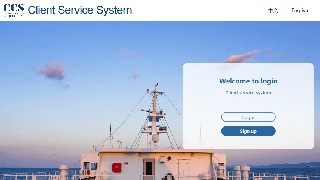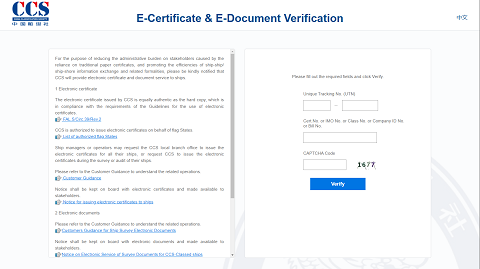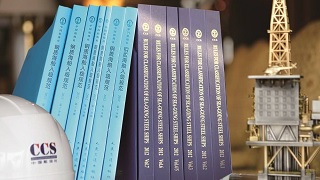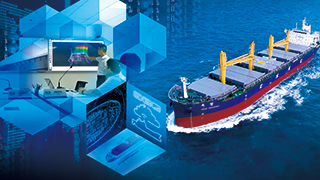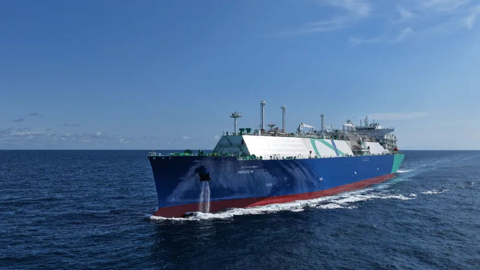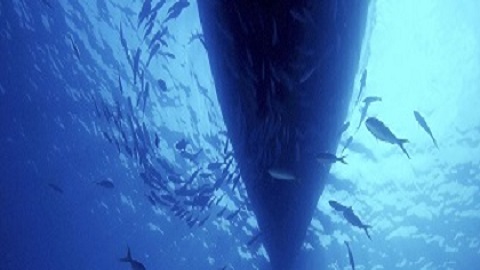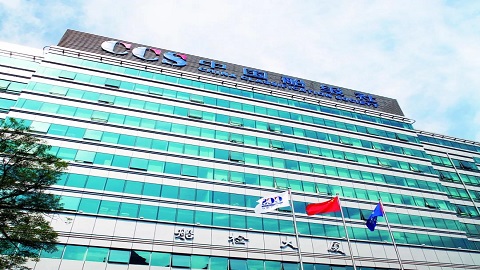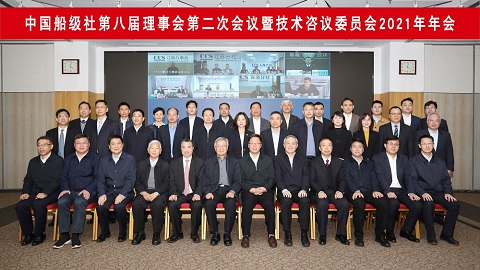In recent years, China enjoys a strong momentum of marine economy development, especially the fast growth of some emerging marine industries driven by rapid advancement of science and technology.
By Liang Yuanhua, CCS Offshore Engineering Technology Center

In recent years, China enjoys a strong momentum of marine economy development, especially the fast growth of some emerging marine industries driven by rapid advancement of science and technology. Statistics show that China's total marine economy exceeds RMB 9 trillion in 2021. In China, so far, the annual output of offshore oil and gas has exceeded 65 million tons, the cumulative installed capacity of offshore wind power has reached 26.4GW, ranking first in the world;annual fisheries and aquaculture have exceeded 20 million tons, ranking the top in the world. However, there is one thing that cannot be ignored, that is, the potential risks in the development and utilization of marine resources, because they have already affected the high-quality development of China's marine economy. Therefore, unified technical and operational standards are needed to guide the development of the economy towards a safe, healthy and orderly direction.
I.Relevant national planning
In order to develop the marine economy and guide the industry for sustainable development, all relevant national departments in China have made top-level plans for corresponding industries under their supervision, so as to build China into a great maritime power and a great transportation power.
1.The Ministry of Transport
In 2020, the Ministry of Transport issued the Marine Technology Regulatory System Framework (2020) (hereinafter referred to as the System Framework), which provides top-level plans for future marine technology regulations. It is applicable to various transport vessels, mobile platforms, and offshore floating and stationary facilities not used for oil and gas production. Entrusted by the Maritime Safety Administration of the Ministry of Transport, China Classification Society (CCS) is currently drafting relevant technical and survey rules for offshore mobile platforms, and floating and stationary facilities based on the System Framework. Those rules will provide a technical basis for the safety production supervision over all those platforms and facilities.
2.The Ministry of Emergency Management
In order to ensure the safety of offshore oil and gas production and operations as well as the safety of personnel, the Ministry of Emergency Management has started to develop offshore oil safety standards since 2018, aiming to prepare a complete set of the Safety Regulations for Offshore Oil and Gas Exploitation. In December 2018, the Standardization Administration of China issued the document [2018] No. 82 to arrange for the preparation of the national standard Code of safety practice for offshore oil & gas exploration and production – Part 1: General (GB40554), which will be implemented from September 1, 2022. Currently, Parts II to V are under compilation, in which CCS is also playing a part.
3.The Ministry of Natural Resources
In May 2022, the Ministry of Natural Resources released the Natural Resource Standard System on its website, covering more than 3,700 national and professional standards that are in force, under R&D, or need to be formulated and revised (as of April 28th, 2022). Given the actual needs of its marine management, and the characteristics of the marine industry, a marine standard sub-system has been set up. It focuses on various marine business functions, supplemented by the professional disciplines related to marine businesses. The sub-system is divided into five categories, which are marine economic development, sea and island management, early marine warning and monitoring, marine decision-making services, and polar ocean scientific expeditions. In the category of marine economic development, there is not only the well- known Effluent Limitations for Pollutants from Offshore Petroleum Exploration and Production (GB 4914-2008), but also the technical specifications for the industry concerned power generation plants by marine energy, for example, tidal energy and wave energy.
II.Rules and Guidelines of China Classification Society
CCS released the Framework Outline of China Classification Society Normative Systems in 2021 to support the high-quality development of China's ships and offshore engineering. The Systems fully satisfy the development needs of gigantic ships, deep-sea offshore engineering, functional diversification, green power, and intelligent systems. It provides hierarchical analysis and top-level planning for CCS's rules and guidelines in terms of classification rules, survey rules, basic rules, special rules, and guidelines, so as to guide the research and development of CCS rules.
For offshore engineering rules and guidelines, CCS has basically formed a top-level rules centering on its main businesses of mobile platforms, floating facilities, and stationary facilities and supported by more than 50 special rules and guidelines, and they have greatly supported China's development of the offshore engineering industry. In addition to the traditional offshore oil and gas, CCS actively responds to the needs of the industry, making efforts in offshore wind power, fishery breeding, tourism and leisure, seabed mining and other aspects, and issued relevant guidelines.
1.Offshore wind power
As early as October 28, 2009, the CCS Technical Office Committee reviewed and approved the technical research on the Guidelines for Offshore Wind Turbine Operating Platforms. According to the technical characteristics of the mobile platform for offshore wind turbine installation, they studied the fire and explosion prevention, life-saving and escape, the stability of landing, the influence of frequent lifting on the fatigue life of the lifting system, and the structure type of landing box in the intertidal zone, and put forward the requirements different from those of traditional oil and gas drilling platforms (see main differences in Table 1). The Guidelines, coming into effect in February 2012, has greatly promoted the healthy and orderly development of China's offshore wind turbine operating platforms. Currently, there are more than 90 offshore wind turbine operating platforms classed by CCS, ranking first in IACS. The offshore wind turbine operating platforms surveyed by CCS can be divided into four generations.
In 2009, CCS prepared and released the Rules for Offshore Wind Turbines. In 2017, it prepared and released the Guidelines for Construction Survey of Offshore Wind Farm Facilities, which sets out the technical requirements for the survey of offshore wind turbines, the lower support structures and wind measuring towers of offshore wind turbines, and for structures, fire control, rescue and escape, signals, pollution prevention of offshore booster station platforms. So far, nearly 50 offshore booster/converter stations have been surveyed by CCS, including Asia's largest Jiangsu Rudong offshore wind power flexible DC converter station. After deep researches on and summary of China's offshore wind farm construction experience from 2019 to 2021, CCS successively developed and released the Guidelines for Offshore Booster Station Platform (2019), the Guidelines for Construction Survey of Offshore Wind Farm Facilities (2020), the Guidelines for Construction Survey of Offshore Wind Farm Facilities, and the Guidelines for Quality Acceptance of Fire Protection Engineering Construction for Offshore Booster Station Platforms (2021), which provide technical guidance for the safe, healthy and orderly development of offshore wind farms. In addition, with the development and practice of floating wind turbines in the industry, CCS issues the Guidelines for Offshore Floating Wind Turbines Platforms (2021) by timely summarizing its experience in plan approval and survey of floating wind turbines such as "SAN XIA YIN LING". The Guidelines fully consider the characteristics of unattended operation of offshore floating wind turbines, the level of accident consequences, the difference between floating wind turbine platforms, and ships and offshore oil and gas platforms, and specifies technical and inspection requirements for offshore floating wind turbine platforms and their auxiliary systems. At present, CCS is providing plan approval and survey services for several floating wind turbines, such as the first domestic floating wind power platform "FU YAO" operating under deep-sea conditions, and CNOOC Rongfeng Nanhai floating wind turbines.
2.Offshore aquaculture
High water exchange rate and less pollution in the deep- sea waters make the fish bred in large-scale aquaculture facilities in it are closer to the quality of "wild fish", so that the products are popular in the market. However, China's deep seas see harsh marine environmental conditions (high winds and waves, and frequent typhoons). Offshore aquaculture facilities should be designed on the basis of offshore engineering. CCS has prepared the Guidelines for Survey of Offshore Aquaculture Facilities through independent as well as cooperative research with Dalian University of Technology. The Guidelines are applicable to specific operating environmental conditions and functions of marine fisheries and aquaculture facilities, which refer to stationary, floating, and mobile types and aquaculture vessels. It also sets out technical requirements for the structure, hydrodynamic load and performance, electromechanical, signaling, fire-fighting and life-saving equipment, and fishing net hydrodynamics of aquaculture facilities. So far, more than 50 marine aquaculture facilities have applied for plan approval and construction inspection to CCS. They include widely known ones in the industry like "GENG HAI 1", "GUO XIN 1", and "JING HAI" series. Based on the engineering experience of the above- mentioned projects, CCS is upgrading the Guidelines for Survey of Offshore Aquaculture Facilities, aiming to provide a better technical guidance for the industry.



3.Seabed mining
Among the discovered deep-sea mineral resources, those valuable to production and human life mainly are polymetallic sulfides, cobalt-rich crusts and polymetallic nodules. Experts predict that the content of polymetallic sulfides (copper + zinc)on the global seafloor is 600 times that of terrestrial minerals of the same kind. Seabed enjoys huge resource potential. After decades of research, great progress has been made in deep sea mining technology, although it is still in the pilot stage. CCS has also carried out research in this area and has prepared the Guidelines for Deep-Sea Mining Facilities, which lays down technical requirements for classification inspection, hulls, positioning systems, marine systems, electrical installations, fire protection, pollution prevention and mining system of deep-sea mining facilities. Technical requirements for mining systems cover subsystems like deployment and recovery systems, ore cargo handling systems, ore dewatering systems, subsea collection systems, underwater lift systems, tail water treatment and discharge systems, mining control and monitoring systems, as well as power transmission and distribution system. It is noted that seabed mining can have a significant impact on deep seabed ecosystems. Hence, some governments and environmental groups have called for a moratorium on mining until the ecological consequences is figured out. The United Nations-based International Seabed Authority (ISA), a supervisor of deep sea mining activities, will hold an ISA meeting in July 2022, which will impact the direction of deep-sea mining.


4.Other researches on new marine economic technology
In addition to the above-mentioned technical researches on offshore wind power, marine aquaculture, and seabed mining, CCS is also studying on offshore leisure tourism facilities, ocean thermal energy devices, ocean wave energy devices, tidal current energy devices, and ocean wind power hydrogen production. Based on that, relevant rules and guidelines will be researched and prepared according to the market need.
III.Outlook
There is huge potential in the development of new marine economy, and the equipment and technology used to develop marine resources involve many disciplines, categories, big differences, high risks and great challenges. Offshore facilities are also transforming towards unmanned, intelligent and digital ones. To provide better services, CCS closely cooperates with universities, design institutes, construction plants, product factories and users in the R&D of rules and guidelines. It focuses on three main risk points, i.e., personnel risk, facility risk and environmental pollution, and conducts risk analyses in R&D and compilation of guidelines applicable to China's social, economic and technological development. It builds a safety guarantee system for the entire life cycle of China's offshore engineering facilities, so as to help modernize the governance system and capacity of China's offshore engineering.
Note: If you need to reprint, please indicate the source of the information.

